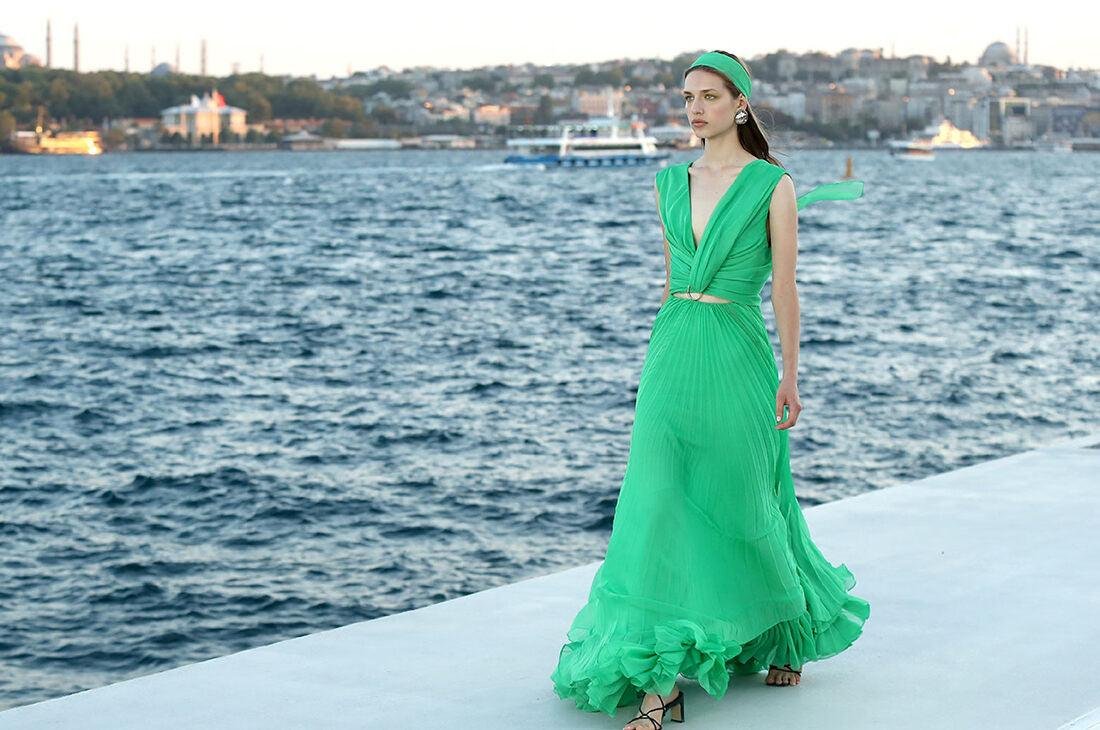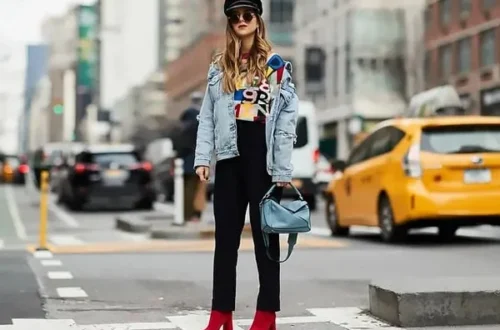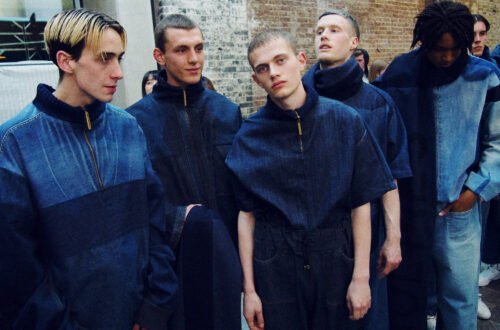Hey there, fellow wanderer. Picture this: I’m strolling through the bustling markets of Marrakech, the sun beating down, and I’m wearing this lightweight linen shirt that feels like a second skin. It was made from organic cotton by a local artisan, and get this—it packs down to nothing in my backpack. That’s the magic of conscious fashion when you’re traveling light. It’s not just about looking sharp on the go; it’s about choosing pieces that respect the planet and the people who make them. In this article, we’ll dive into cool, ethical styles from every corner of the globe, sharing tips to build a wardrobe that’s versatile, sustainable, and ready for adventure. Whether you’re jetting off to Tokyo or hiking in Patagonia, let’s explore how to dress with intention without weighing down your luggage—or your conscience.
What is Conscious Fashion?
Conscious fashion goes beyond trends; it’s about making thoughtful choices that minimize harm to the environment and support fair labor. Think organic materials, recycled fabrics, and brands that prioritize transparency in their supply chains. It’s a mindset shift from fast fashion’s throwaway culture to pieces built to last, reducing waste and carbon footprints along the way. I’ve found it transforms how I shop—now I ask, “Where did this come from?” before hitting buy.
The Difference Between Conscious and Sustainable Fashion
While sustainable fashion focuses on eco-friendly materials and low-impact production, conscious fashion encompasses ethics too, like worker rights and animal welfare. It’s broader, urging us to consider the full lifecycle of a garment. In my travels, I’ve seen how this holistic approach empowers communities, from weavers in India to designers in Sweden.
Why Conscious Fashion Matters for Travelers
For us nomads, conscious fashion means packing smarter—versatile items that work from beach to city without excess baggage fees. It lightens our environmental load too, as tourism already strains resources. Remember my Bali trip? Switching to ethical basics cut my packing in half and sparked conversations with locals about fair trade.
Traveling Light: The Art of Minimalist, Ethical Packing
Traveling light isn’t just a packing hack; it’s a philosophy that aligns perfectly with conscious fashion by emphasizing quality over quantity. Choose multi-purpose pieces like a scarf that doubles as a blanket or pants that roll up for warmer days. This approach reduces your carbon footprint from transport and encourages investing in durable, ethical items that endure countless journeys.
Benefits of a Capsule Wardrobe for Globetrotters
A capsule wardrobe streamlines decisions, saving time and space in your suitcase. It’s all about mix-and-match neutrals with pops of color from sustainable dyes. On my European rail adventure last summer, five key pieces got me through two weeks—proving less really is more, especially when they’re made from recycled polyester or organic hemp.
Common Mistakes to Avoid When Packing Light
Overpacking “just in case” outfits often leads to unused clothes and heavier bags. Stick to weather-appropriate, wrinkle-resistant fabrics from ethical brands. I once lugged extra jeans to New Zealand only to regret it—now I swear by lightweight merino wool that stays fresh longer.
Conscious Fashion Hotspots Around the World
From Scandinavian minimalism to African prints, conscious fashion thrives globally, blending cultural heritage with modern sustainability. Brands worldwide are innovating with local materials, like bamboo in Asia or upcycled denim in the US. Exploring these scenes during travels not only updates your style but supports economies focused on green practices.
Europe: Pioneers in Ethical Elegance
Europe leads with brands emphasizing fair wages and circular design. Think Denmark’s Ganni using recycled fabrics or France’s Veja sneakers from wild rubber. During my Paris stint, I picked up a timeless trench from a zero-waste atelier—it’s been my go-to for rainy London days ever since.
Scandinavian Simplicity Meets Sustainability
Nordic countries excel in functional, eco-chic designs. Sweden’s Filippa K offers timeless knits from organic wool, perfect for layering on chilly fjord hikes. Their “buy less, choose well” ethos resonates with travelers aiming to pack light without sacrificing style.
Mediterranean Vibes with a Green Twist
In Spain and Italy, brands like Ecoalf recycle ocean plastics into breezy summer wear. I snagged a swimsuit in Barcelona made from fishing nets—talk about turning trash to treasure. It’s lightweight, quick-drying, and a conversation starter at beach bars.
Asia: Tradition and Innovation Hand in Hand
Asia fuses ancient techniques with cutting-edge sustainability, from Japan’s upcycled kimono fabrics to India’s hand-loomed organics. These pieces are often feather-light, ideal for humid climates and long-haul flights. My favorite? A silk scarf from Thailand’s hill tribes—ethically sourced and packs smaller than a passport.
India’s Vibrant Ethical Textiles
India boasts brands like No Nasties using fair-trade cotton for colorful kurtas that double as dresses. On a Rajasthan road trip, I wore one that transitioned from market browsing to evening dinners seamlessly. It’s a reminder that conscious choices can celebrate culture without exploitation.
Japan’s Minimalist Mastery
Japanese labels like Muji prioritize natural fibers in versatile basics. Their compact travel line, with wrinkle-free shirts, helped me navigate Tokyo’s subways effortlessly. Plus, their commitment to reducing packaging waste aligns with traveling light principles.
Africa: Bold Patterns, Bold Commitments
African fashion shines with vibrant, upcycled designs from brands like LemLem in Ethiopia, using handwoven cotton. These airy pieces are perfect for safari adventures or urban explorations. In Cape Town, I discovered a dress from recycled saris—light, breathable, and empowering women artisans.
North America: Innovation-Driven Ethics
The US and Canada innovate with tech-savvy sustainability, like Patagonia’s recycled outdoor gear. Ideal for active travelers, these brands focus on durability. Hiking in Yosemite, my Patagonia jacket withstood rain and packed tiny—proving North American conscious fashion is built for real-world wanderlust.
US Brands Leading the Charge
American icons like Everlane emphasize transparency with radical pricing breakdowns. Their lightweight tees from organic cotton are staples in my carry-on. It’s humorous how something so simple can make you feel like a savvy, planet-saving superhero.
Canadian Cool with Eco-Edge
Canada’s Tentree plants trees per purchase, offering comfy hoodies from Tencel that’s super packable. On a Vancouver island hop, their gear kept me cozy without bulk— and knowing I’ve helped reforest areas adds that emotional high.
South America: Nature-Inspired Sustainability
From Brazil’s Osklen using Amazonian fibers to Chile’s eco-wool knits, South America draws from biodiversity. These natural materials are lightweight and resilient. Trekking in Peru, a alpaca scarf from local co-ops was my lightweight layer against Andean winds.
Oceania: Down-Under Durability
Australia and New Zealand prioritize ocean-friendly fabrics, like Outland Denim’s recycled jeans. Perfect for beach-to-bar transitions, they’re comfy on long flights. In Sydney, I found a swimsuit from hemp—light, UV-protective, and a nod to Aussie surf culture.
Comparing Fast Fashion vs. Conscious Fashion
Fast fashion tempts with cheap thrills but harms the planet through massive waste and poor labor conditions. Conscious fashion invests in quality, lasting longer and supporting ethics. While upfront costs are higher, the long-term savings and feel-good factor win out—trust me, ditching impulse buys lightened my wallet and my luggage.
| Aspect | Fast Fashion | Conscious Fashion |
|---|---|---|
| Cost | Low initial, high hidden environmental toll | Higher upfront, lower lifetime cost |
| Durability | Short-lived, frequent replacements | Built to last, versatile use |
| Impact | High water use, pollution, exploitation | Low carbon, fair trade, recycled materials |
| Travel Fit | Bulky, wrinkle-prone | Packable, multi-functional |
Pros and Cons of Embracing Conscious Fashion While Traveling
Pros include reduced baggage weight, cultural connections through local buys, and peace of mind from ethical choices. It’s empowering, like when I swapped synthetic tees for bamboo ones—breathable bliss in humid Asia. Cons? Availability in remote spots can be tricky, and initial prices sting if you’re budget backpacking. But the joy of timeless pieces outweighs that.
- Pros:
- Lightweight and versatile for easy packing
- Supports global communities and reduces waste
- Enhances travel stories with meaningful souvenirs
- Cons:
- Higher costs may require saving up
- Limited options in some destinations
- Requires research to avoid greenwashing
Where to Get Conscious Fashion: Navigational Tips
Head to sites like Good On You for brand ratings or apps like DoneGood for curated ethical shops. For in-person, visit markets in places like London’s Portobello for vintage finds or Tokyo’s eco-boutiques. Online, platforms like Etsy offer handmade globals—perfect for pre-trip planning. Internal link: Check our sustainable travel gear guide for more.
Best Tools for Discovering Conscious Fashion Brands
Tools like the Good On You app rate brands on ethics, making choices easy. For transactions, subscription services like Rent the Runway let you borrow high-end sustainable pieces without commitment. Browser extensions like Honey find deals on ethical sites. My go-to? Fashion Revolution’s #WhoMadeMyClothes campaign for transparency checks.
People Also Ask
What does conscious fashion mean?
Conscious fashion means choosing clothing that considers environmental impact, fair labor, and ethical production. It’s about awareness in every step, from sourcing to disposal, promoting longevity over trends. Brands like Patagonia exemplify this with recycled materials and repair programs.
Is conscious fashion the same as sustainable fashion?
Not exactly—sustainable focuses on eco-aspects like low-waste fabrics, while conscious includes social ethics too. They overlap, but conscious is broader, urging holistic responsibility. In practice, many brands blend both for maximum impact.
Why is conscious fashion important?
It combats fashion’s 10% global pollution share by reducing waste and emissions. For travelers, it means lighter footprints—literally and figuratively—while supporting artisans worldwide. Emotionally, it connects us to stories behind our clothes.
How can I start with conscious fashion?
Begin by auditing your closet, then shop secondhand or from certified brands. Apps and sites help; aim for quality pieces. My start? Swapping one fast item monthly—small steps led to a lighter, greener wardrobe.
FAQ
What are some affordable conscious fashion brands for travelers?
Brands like Everlane and Tentree offer budget-friendly organics under $100. Look for sales on their sites or thrift apps for deals. They’re packable and durable, ideal for budget adventurers.
How does traveling light benefit the environment?
It cuts transport emissions from lighter luggage and encourages fewer purchases, reducing consumption. Pairing with conscious pieces amplifies this—less waste, more sustainability. I’ve seen my carbon drop by packing mindfully.
Can conscious fashion be stylish for all occasions?
Absolutely—brands like Stella McCartney prove ethics and elegance coexist. From cocktail dresses to hike pants, options abound. My ethical LBD has graced weddings worldwide without a hitch.
Where can I find conscious fashion in Asia?
Try markets in Bangkok for upcycled silks or online from India’s Fabindia. Local co-ops ensure authenticity. External link: Explore more at Fashion Revolution.
Is vintage shopping considered conscious fashion?
Yes, it extends garment life, cutting demand for new production. Thrift stores worldwide offer unique finds—light on the wallet and planet. My vintage jacket from a NYC flea market? A travel staple for years.
Wrapping up, embracing cool, conscious fashion while traveling light isn’t just a trend—it’s a rewarding way to see the world. It sparked joy in my journeys, from Moroccan souks to Japanese temples, proving style and sustainability can coexist. Next time you pack, choose pieces with stories; they’ll make your adventures richer. Safe travels, and remember: the lightest load is one with purpose.





